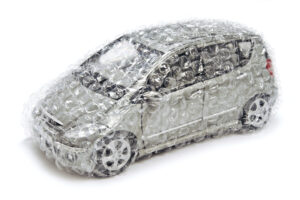Comprehensive and Collision Coverage are two optional coverages that you can add on to your auto insurance policy. If you are considering whether you should add these coverages, this blog is for you.
What is Comprehensive and Collision Coverage?
Collision coverage provides coverage for covered damages to your vehicle caused by hitting another car or object.
Comprehensive coverage provides coverage for covered damages to your car caused by incidents other than collisions, including theft, vandalism, fire, floods, hail, falling objects, and animals.
These coverages can be purchased together or separately and are not legally required. However, if you are currently leasing or financing your vehicle, the bank or lienholder will generally require you to buy these additional coverages.
Should I keep this coverage for my vehicle?
Once a car is no longer being leased or financed, and as it reaches a certain age and mileage, it may not make sense financially to have comprehensive or collision coverages under your auto policy.
It is important to remember that dropping these coverages leaves you at risk. Without comprehensive and collision coverage, you are responsible and will have to pay out of pocket for damages to your vehicle.
Here are some factors to consider when deciding to drop these coverages:
Review the cost of your insurance. Consumer Reports recommends that drivers drop comprehensive and collision when your annual premium is equal to or exceeds 10% of your car’s cash value. For example, if you are currently paying $1,000 a year for comprehensive and collision coverages alone and your car is worth $1,000 or less, it may not make sense financially to carry these coverages anymore. In the worst-case scenario of a total loss, you might be paying more in annual premiums than you’d receive for the car itself.
The value of a car and its replacement parts should also be considered. A more expensive car may be worth the cost of comprehensive and collision coverages for more years than a less expensive vehicle, where replacement parts may exceed your deductible. You can use a car value calculator to determine what your vehicle is worth, which depends on many factors including make, model, age, mileage, and more.
Another thing to take into account is your deductible. For example, if you have a $500 deductible on a car that is worth $800 and your vehicle is a total loss, then you would collect $300 back from your insurance carrier.
If you are still unsure whether you should add comprehensive and collision coverage to your policy, you should consult an insurance professional for a review your policy options. You can find an authorized Maryland Auto provider here.




